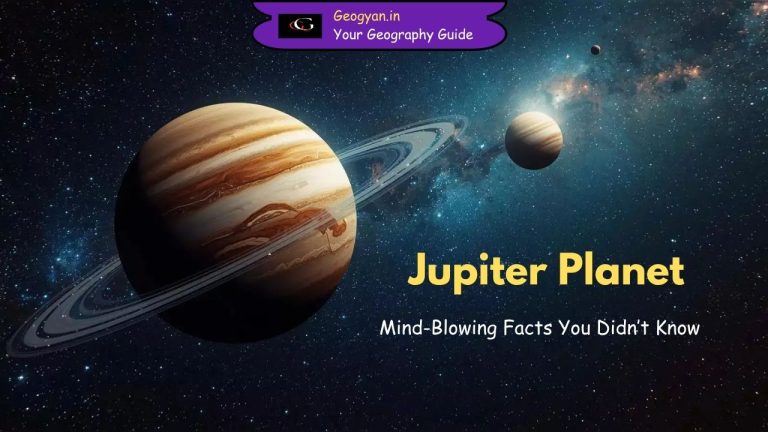Access the latest NCERT Solutions for Class 7 Geography Chapter-1: Environment, updated for 2024-2025. Solution is designed to help students tackle difficult questions with ease. The content is written in simple, easy-to-understand language.
Exercise
1. Answer the following questions:
(i) What is an ecosystem?
An ecosystem is a system formed by the interaction of all living organisms with each other and with the physical and chemical factors of the environment in which they live. It involves the transfer of energy and materials among its components.
(ii) What do you mean by natural environment?
The natural environment refers to the land, water, air, plants, and animals that exist without human intervention. It includes both biotic (living) and abiotic (non-living) components.
(iii) Which are the major components of the environment?
The major components of the environment are the natural environment (which includes the lithosphere, hydrosphere, atmosphere, and biosphere) and the human-made environment.
(iv) Give four examples of human-made environment.
Examples of human-made environments include roads, buildings, bridges, and parks.
(v) What is the lithosphere?
The lithosphere is the solid outer layer of the Earth, made up of rocks and minerals. It includes the Earth’s crust and provides landforms such as mountains, plains, and valleys.
(vi) Which are the two major components of the biotic environment?
The two major components of the biotic environment are plants and animals.
(vii) What is the biosphere?
The biosphere is the narrow zone of the Earth where land, water, and air interact to support life. It includes all living organisms on Earth.
2. Tick the correct answer:
(i) Which is not a natural ecosystem?
(a) Desert
(b) Aquarium ✔
(c) Forest
(ii) Which is not a component of the human environment?
(a) Land ✔
(b) Religion
(c) Community
(iii) Which is a human made environment?
(a) Mountain
(b) Sea
(c) Road ✔
(iv) Which is a threat to the environment?
(a) Growing plant
(b) Growing population ✔
(c) Growing crops
3. Match the following:
(i) Biosphere (a) blanket of air which surrounds the earth
(ii) Atmosphere (b) domain of water
(iii) Hydrosphere (c) gravitational force of the earth
(iv) Environment (d) our surroundings
(e) narrow zone where land water and air interact
(f) relation between the organisms and their surroundings
Ans.
(i) Biosphere – (e) narrow zone where land, water, and air interact
(ii) Atmosphere – (a) blanket of air which surrounds the Earth
(iii) Hydrosphere – (b) domain of water
(iv) Environment – (d) our surroundings
4. Give reasons:
(i) Man modifies his environment.
Man modifies his environment to meet his growing needs, such as constructing buildings, roads, and factories, using resources for daily activities, and altering landscapes for agriculture and settlements.
(ii) Plants and animals depend on each other.
Plants and animals depend on each other for survival. Animals rely on plants for food, while plants depend on animals for processes such as pollination and seed dispersal, ensuring the continuation of their life cycle.
These answers should help 7th-grade students understand key concepts from their NCERT geography chapter.
Other Important Short Answer Type Question
Based on Chapter 1 of the NCERT Class 7 Geography textbook, “Environment,” here are important short-answer type questions other than the exercises that could be relevant for previous exams, including UPSC:
1. What is the meaning of environment?
The environment is everything that surrounds living organisms. It includes both natural and human-made phenomena. The natural environment comprises land, water, air, plants, and animals, while the human-made environment includes buildings, roads, and other structures created by humans.
2. Explain the components of the environment.
The environment consists of three main components:
- Natural Environment: Includes land (lithosphere), water (hydrosphere), air (atmosphere), and living organisms (biosphere).
- Human-made Environment: Refers to the structures created by humans like buildings, roads, bridges, etc.
- Human Environment: Consists of social, cultural, and economic interactions among humans.
3. What is the lithosphere, and why is it important?
The lithosphere is the solid crust or top layer of the Earth. It consists of rocks and minerals and is important because it provides land for agriculture, forests, and human settlements. It is also a source of natural resources like minerals.
4. How do human beings modify the environment?
Humans modify the environment to meet their needs by building houses, factories, and roads. They also extract natural resources, pollute air and water, and change land use for agriculture or urbanization. These modifications often harm the natural environment.
5. What is an ecosystem?
An ecosystem is a system formed by the interaction between living organisms (plants, animals, humans) and their surroundings (air, water, soil). Ecosystems can vary in size, from a small pond to a vast forest or desert.
6. Why is there a variation in vegetation and animal life in different places?
Vegetation and animal life vary in different places due to differences in climate, soil, water availability, and human activities. For example, deserts have fewer plants and animals because of low rainfall, while forests support more diverse life due to higher moisture levels.
7. How do human beings depend on the natural environment?
Human beings rely on the natural environment for basic needs such as air, water, food, and land. The natural environment provides resources like wood, minerals, and energy, which are essential for survival and development.
MCQs: Our Environment
Here are 20 MCQs based on Chapter 1 of the NCERT Class 7 book, along with answers at the end. These questions can also align with NCERT exams and UPSC preparation.
1.What is the natural environment composed of?
(a) Cars, buildings, and roads
(b) Water, air, plants, and animals
(c) Computers and technology
(d) Factories and industries
2. Which of the following is not a component of the human-made environment?
(a) Roads
(b) Buildings
(c) Mountains
(d) Bridges
3. What is the lithosphere?
(a) The blanket of air surrounding the Earth
(b) The solid crust or the hard top layer of the Earth
(c) The water bodies on the Earth’s surface
(d) The domain of living organisms
4. Which layer of the Earth holds the atmosphere due to gravity?
(a) Hydrosphere
(b) Biosphere
(c) Lithosphere
(d) Atmosphere
5. What forms the biosphere?
(a) Living organisms only
(b) Land and water only
(c) Plants, animals, and humans
(d) Interaction between land, water, and air supporting life
6. What is an ecosystem?
(a) A large pond
(b) Interaction of living organisms with each other and their environment
(c) The network of roads and buildings
(d) A factory where goods are produced
7. Which of the following is an example of a biotic component of the environment?
(a) Air
(b) Water
(c) Plants
(d) Rocks
8. The atmosphere is primarily responsible for:
(a) Providing minerals
(b) Protecting Earth from harmful rays
(c) Storing water
(d) Producing food
9. What does the hydrosphere consist of?
(a) Air
(b) Water
(c) Land
(d) Rocks
10. Which is not a natural ecosystem?
(a) Desert
(b) Aquarium
(c) Forest
(d) Ocean
11. Which human activity directly modifies the natural environment?
(a) Growing plants
(b) Building roads
(c) Breeding animals
(d) Watching clouds
12. Which of these is a threat to the environment?
(a) Growing trees
(b) Growing population
(c) Clean air
(d) Producing food
13. Human beings interact with which of the following?
(a) Only biotic components
(b) Only abiotic components
(c) Both biotic and abiotic components
(d) Neither biotic nor abiotic components
14. What is the key characteristic of the hydrosphere?
(a) It includes the air we breathe
(b) It consists of water bodies like oceans and rivers
(c) It comprises plants and animals
(d) It includes landforms like mountains
15. Which of the following is not a domain of the environment?
(a) Lithosphere
(b) Biosphere
(c) Hydrosphere
(d) Atmosphere
16. Which of these statements is true about early human interaction with the environment?
(a) They used advanced technology to shape the environment
(b) They adapted to the natural surroundings
(c) They invented the wheel immediately
(d) They polluted the atmosphere
17. Which of these gases is primarily found in the atmosphere?
(a) Oxygen
(b) Iron
(c) Gold
(d) Coal
18. The solid crust or the hard top layer of the Earth is known as:
(a) Atmosphere
(b) Biosphere
(c) Lithosphere
(d) Hydrosphere
19. Which of these is an abiotic component of the environment?
(a) Animals
(b) Plants
(c) Rocks
(d) Microorganisms
20. Which phenomenon helps maintain a balance between natural and human environments?
(a) Pollution
(b) Sustainable living
(c) Deforestation
(d) Overpopulation
Answers:
- (b) Water, air, plants, and animals
- (c) Mountains
- (b) The solid crust or the hard top layer of the Earth
- (d) Atmosphere
- (d) Interaction between land, water, and air supporting life
- (b) Interaction of living organisms with each other and their environment
- (c) Plants
- (b) Protecting Earth from harmful rays
- (b) Water
- (b) Aquarium
- (b) Building roads
- (b) Growing population
- (c) Both biotic and abiotic components
- (b) It consists of water bodies like oceans and rivers
- (d) Atmosphere
- (b) They adapted to the natural surroundings
- (a) Oxygen
- (c) Lithosphere
- (c) Rocks
- (b) Sustainable living
Other Chapters
| Chapter 2:- Inside Our Earth | Chapter 3:- Our Changing Earth |
| Chapter 4:- Air | Chapter 5:- Water |
| Chapter 6:- Human Environment | Chapter: 7- Life in the Deserts |





























